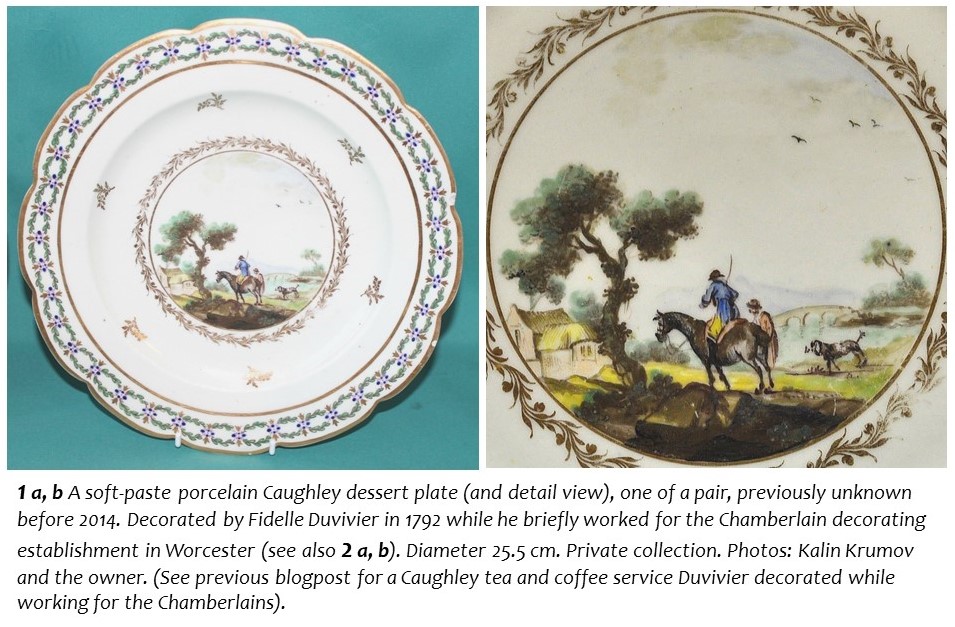GALLERY & BLOG

Welcome to the Gallery & Blog section, where I’ll regularly post pictures, share news and report any discoveries that come to light. I’ll certainly be grateful to hear from you and receive pictures or other news items of interest. Many thanks! – Charlotte Jacob-Hanson
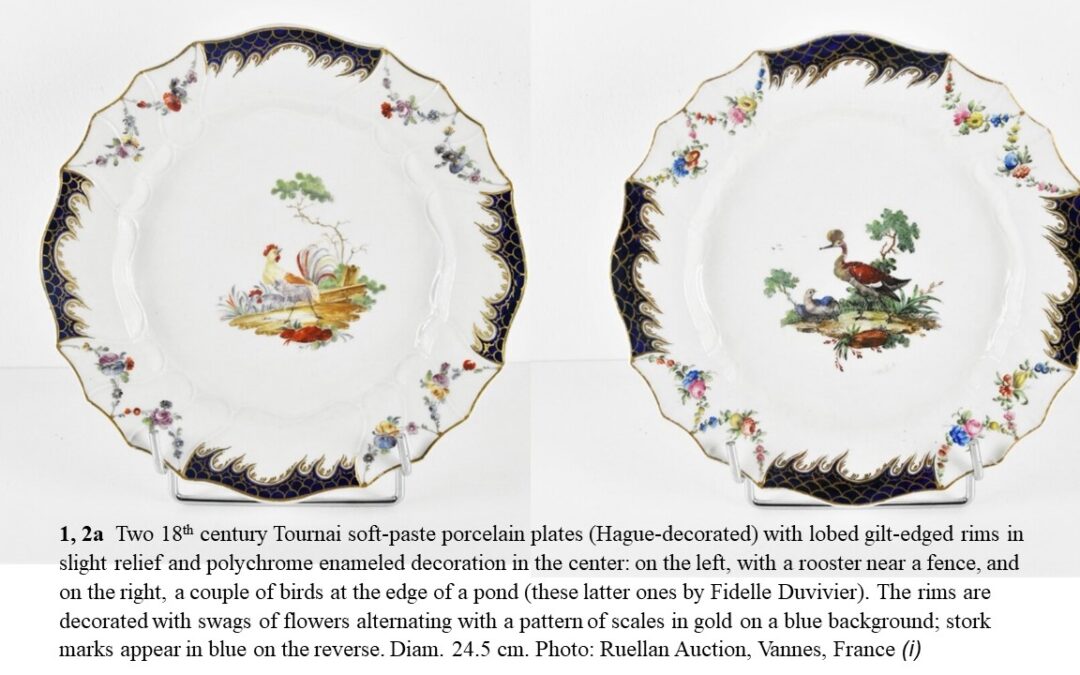
Tournai/Hague plates boost the count of Duvivier’s birds
Over the past five months I have discovered more of Fidelle Duvivier’s bird decoration on Tournai porcelain, done while he worked in The Hague at some point during the years 1781 to 1784. During his time in the Netherlands he was mainly employed by Rev. de Mol at the Loosdrecht porcelain manufactory. But prior to his death in 1782 De Mol had been in declining health and finding it difficult to pay his workers due to the manufactory’s poor financial situation. Some employees, including Duvivier, were apparently forced to look for extra work elsewhere.
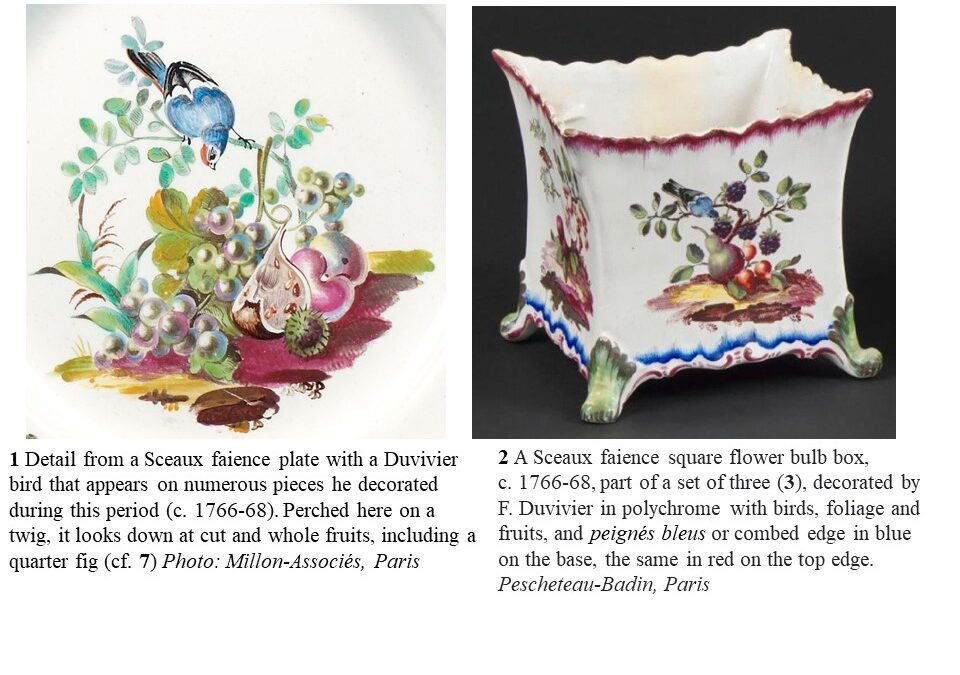
Spotting Duvivier Décor on Sceaux and Mennecy
My previous blogpost introduced some new attributions to Fidelle Duvivier in the older French ceramic collections of the Victoria & Albert Museum in London.(i) One was a soft-paste porcelain Mennecy ewer painted with birds in foliage, featuring a blue and black-feathered bird quite like the one visible in example 1. These Sceaux plate details have again helped me to identify some new Duvivier work that was auctioned in France during the past three years.
The new Sceaux faience and Mennecy porcelain examples (2, 4, 6) share two common decorative motifs: one is the blue/black bird just referred to, and the second is the cut-open fig lying on the ground (also seen in example 1). The fig often appears in the rim decoration of some exquisite Sceaux faience plates with bird decoration (cf. 5) that I have shown in earlier blogposts.(ii)
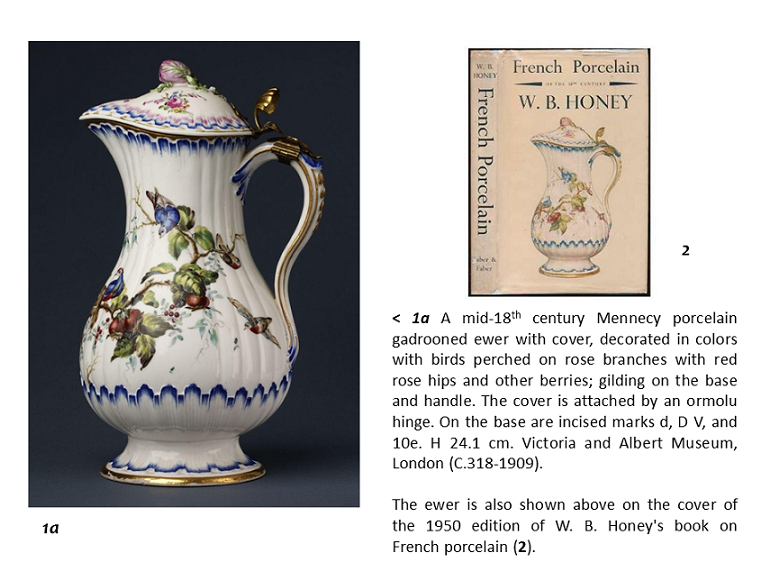
Duvivier’s Birds on Mennecy Porcelain in the
V & A Museum
This striking Mennecy soft-paste porcelain ewer (1a) has been in the V & A ceramics collection in London since 1909, when it came with a large collection of French porcelain donated by the art collector and dealer, Joseph Henry Fitzhenry (1836-1913). A generous lender and donor to the museum for over forty years, Fitzhenry greatly expanded its collection of Continental ceramics with his gifts. (i)
By virtue of the similar bird decoration recently identified on other Mennecy examples, both this ewer and another Mennecy teapot donated by Fitzhenry (6a), can be added to the growing group of earliest attributions to Fidelle Duvivier’s hand. (ii)
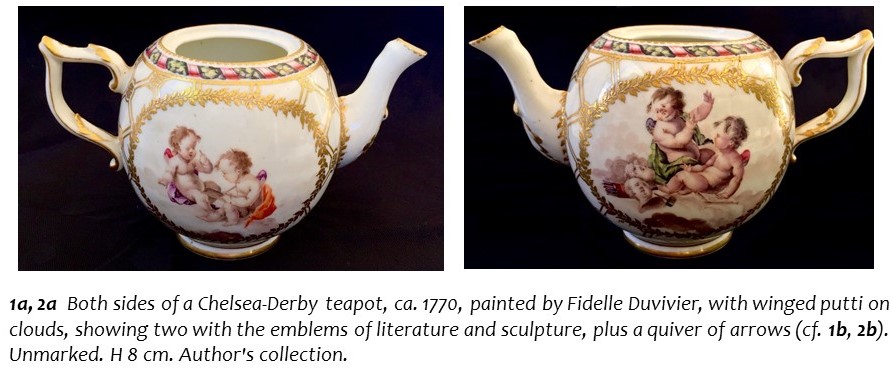
Duvivier at Derby – the clues and secrets of a Chelsea-Derby teapot
Luckily for me, the teapot pictured here did not sell last year at a porcelain auction in Heidelberg, Germany, and I was able to acquire it after the sale.(i) It was erroneously catalogued as Tournai porcelain, but is actually an English Chelsea-Derby teapot with a shape dating from the time Fidelle Duvivier was employed at the Derby factory (cf. 3). And what immediately caught my eye were those putti (cherubs) which I recognized as his work. In fact, they closely resemble those he painted later on Ansbach porcelain at the Lyncker decorating atelier in The Hague, ca. 1783 (cf. 4), as I described in a previous blogpost.(ii)
